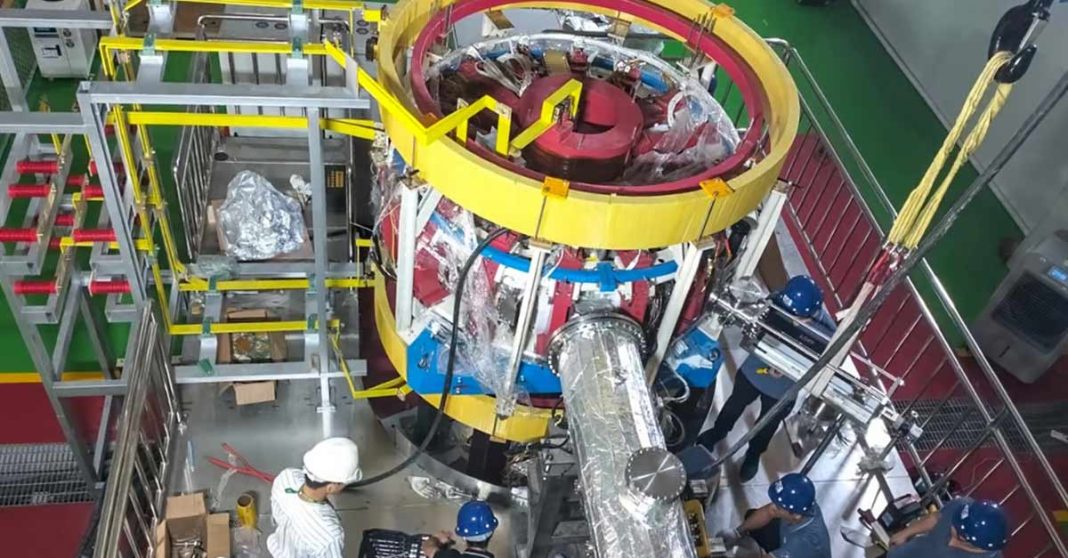Thailand launched the first tokamak device in Southeast Asia on Tuesday with the help of Chinese scientists, marking a milestone in the development of fusion energy research and scientific cooperation between the two countries.
The tokamak, called Thailand Tokamak-1, is a joint effort between the Thailand Institute of Nuclear Technology and the Chinese Academy of Sciences’ Institute of Plasma Physics in Hefei, which is expected to pave the way for Thailand to design and build its own tokamak for domestic use in the next decade.
“This is a significant achievement for both countries, and it is a sign of the growing cooperation between Thailand and China in the field of science and technology,” said Nopporn Poolyarat, head of the Thailand Institute of Nuclear Technology’s nuclear fusion and plasma division.
Thailand Tokamak-1 was upgraded from an earlier device developed by the Chinese Academy of Sciences and was designed to replicate the sun’s nuclear fusion process to be used for research and development in the field of fusion energy, which could help Thailand become a hub for fusion technology development in Southeast Asia.
“The launch of Thailand Tokamak-1 is a major step forward in our efforts to develop fusion energy,” said Huang Yiyun, a key member of the project from the Chinese Academy of Sciences. “We are confident that this device will help us make significant progress in this field.”
According to the South China Morning Post, China’s Experimental Advanced Superconducting Tokamak (EAST) in Hefei set a world record in April 2023 by maintaining a high-temperature plasma for 403 seconds. This is the longest time any tokamak has ever sustained plasma in this mode, and it puts China at the forefront of nuclear fusion research.
Fusion energy is a clean and sustainable source of energy that has the potential to meet the world’s growing energy needs; however, it is a complex process that has not yet been successfully harnessed on a large scale.
Scientists have been researching fusion for decades, and they are close to developing fusion devices that could be used to generate electricity.
Tokamaks are one type of device that is used to study fusion energy. They are donut-shaped chambers that use magnetic fields to confine the plasma, the hot, charged gas that is necessary for fusion reactions to take place.



